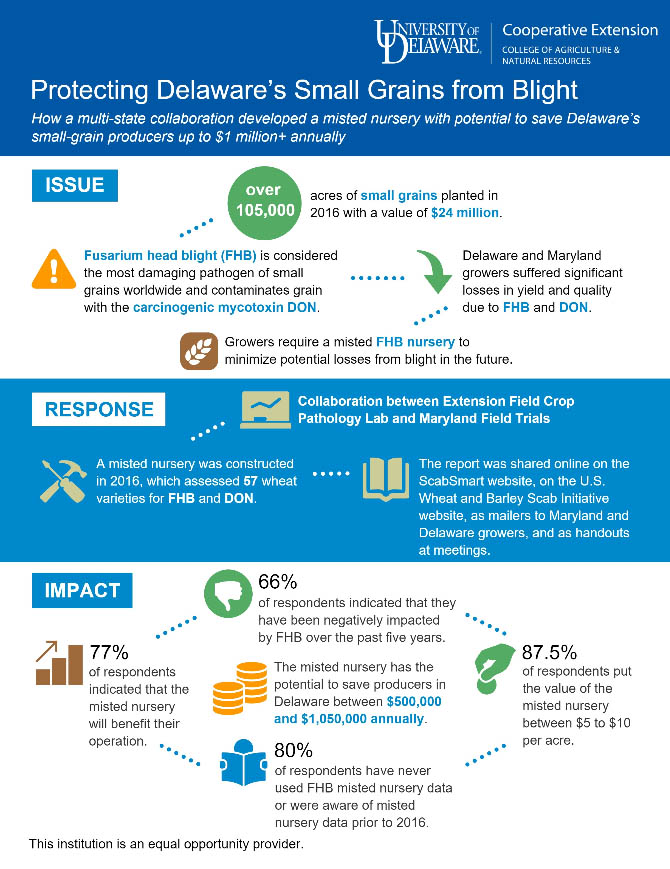
Protecting Delaware’s Small Grains from Blight

ISSUE
Small grains are an essential crop in Delaware, with over 105,000 acres planted in the state in 2016, with a value of $24 million. Fusarium head blight (FHB) is considered the most damaging pathogen of small grains worldwide. This disease reduces yields of wheat and barley and also contaminates grain with the carcinogenic mycotoxin DON. The use of varieties with moderate resistance to FHB and DON is key in managing this disease. In 2013, growers in Delaware and Maryland suffered significant losses in yield and quality due to FHB and DON. Discussions with growers indicated that they did not have reliable FHB resistance data on locally produced varieties to assist them in variety selection. Growers require a misted FHB nursery to minimize potential losses from blight in the future.
RESPONSE
A collaboration between the Extension Field Crop Pathology Lab and the Maryland Field Trials was developed. Grants to fund a misted nursery were submitted to the U.S. Wheat and Barley Scab Initiative (USWBSI), Maryland Commodity Board and Maryland Small Grains Utilization Board. All grants were funded. A misted nursery was constructed in 2016, which assessed 57 wheat varieties for FHB and DON. Data was collected, and a report generated. The report was shared online on the ScabSmart website, on the USWBSI website, as mailers to Maryland and Delaware growers, and as handouts at meetings.
IMPACT
Growers from Delaware (70%), Maryland (25%) and Pennsylvania (5%), representing at least 3,150 acres, responded to online surveys:
- 66% of respondents indicated that they have been negatively impacted by FHB over the past five years.
- 80% of respondents indicated that they have never used FHB misted nursery data or were aware of misted nursery data prior to 2016.
- 77% of respondents indicated that the misted nursery will benefit their operation.
- 87.5% of respondents put the value of the misted nursery between $5 to $10 per acre.
These data indicate the misted nursery has the potential to save producers in Delaware between $500,000 and $1,050,000 annually.
